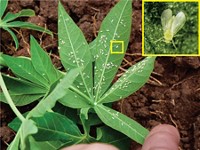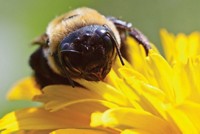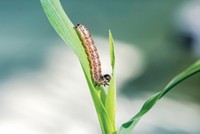Advertisement
Grab your lab coat. Let's get started
Welcome!
Welcome!
Create an account below to get 6 C&EN articles per month, receive newsletters and more - all free.
It seems this is your first time logging in online. Please enter the following information to continue.
As an ACS member you automatically get access to this site. All we need is few more details to create your reading experience.
Not you? Sign in with a different account.
Not you? Sign in with a different account.
ERROR 1
ERROR 1
ERROR 2
ERROR 2
ERROR 2
ERROR 2
ERROR 2
Password and Confirm password must match.
If you have an ACS member number, please enter it here so we can link this account to your membership. (optional)
ERROR 2
ACS values your privacy. By submitting your information, you are gaining access to C&EN and subscribing to our weekly newsletter. We use the information you provide to make your reading experience better, and we will never sell your data to third party members.
Biological Chemistry
Two-Faced Flowers
Tobacco plants add nicotine to their nectar to improve cross-pollination
by Sarah Everts
September 1, 2008
| A version of this story appeared in
Volume 86, Issue 35

FLOWERS USE sweet-smelling nectar to entice pollinators. But a new study shows that some plants prevent birds and insects from binge drinking by lacing the attractive potion in their blooms with a little poison.
Effective cross-pollination is contingent on pollinators traveling from one flower to the next. If nectar is too sweet, pollinators might sate themselves at a single plant, explains Ian T. Baldwin of Max Planck Institute for Chemical Ecology, in Jena, Germany, who led the study.
"Adding the deterrent is the plant's way of saying, 'Move along, we need a job done here,' " comments Robert A. Raguso, a chemical ecologist at Cornell University. "The plant needs a way to show pollinators the door."
Baldwin's team found that pollinators are first enticed to the flowers of Utah's native Nicotiana attenuata tobacco plant with a cocktail of volatile attractants, the most potent of which is benzyl acetone. But the plant also adds a dose of bitter nicotine to ensure only fleeting visits from pollinating hummingbirds, restricting their nectar intake to just two microliter sips, Baldwin says.
To show that adding a little poison to the nectar enables cross-pollination, the researchers engineered tobacco plants that cannot produce nicotine and benzyl acetone.
To do so, they introduced sequences of interfering RNA, or RNAi, into the tobacco plant genome that block the production of essential enzymes in the nicotine and benzyl acetone biosynthetic pathways.
Then the researchers did field tests to evaluate the ability of normal and engineered plants to cross-pollinate. They found that nicotine enabled tobacco to genetically diversify its progeny (Science 2008, 321, 1200).
Adding feeding deterrents to nectar is probably used by other plants that, like tobacco, can also rely on self-pollination, Raguso notes. "The tobacco plant has a contingency plan," because it can also self-pollinate, Raguso says. "If you can already ensure a profit" that is, seed production through self-pollination, "then you can afford to toy with your pollinator," he adds.
"It's an all-encompassing study," comments L. Irene Terry, a chemical ecologist at the University of Utah. "They use not only molecular genetics and plant bioengineering to obtain the traits they want in the plants, but they also follow up this work with chemical analyses, field, and pollinator behavior studies."
"People who have worked in pollination have long claimed that nectar is sugar water, like a soft drink," Baldwin adds. "Nectar is less like a soft drink and more like a hard drink that, like whiskey, contains a mix of sweet and harmful ingredients."






Join the conversation
Contact the reporter
Submit a Letter to the Editor for publication
Engage with us on Twitter